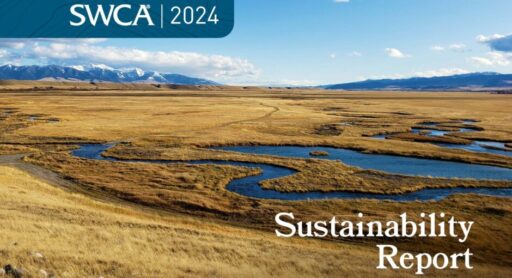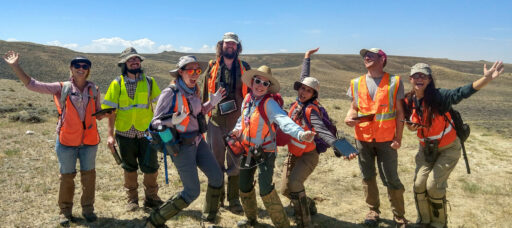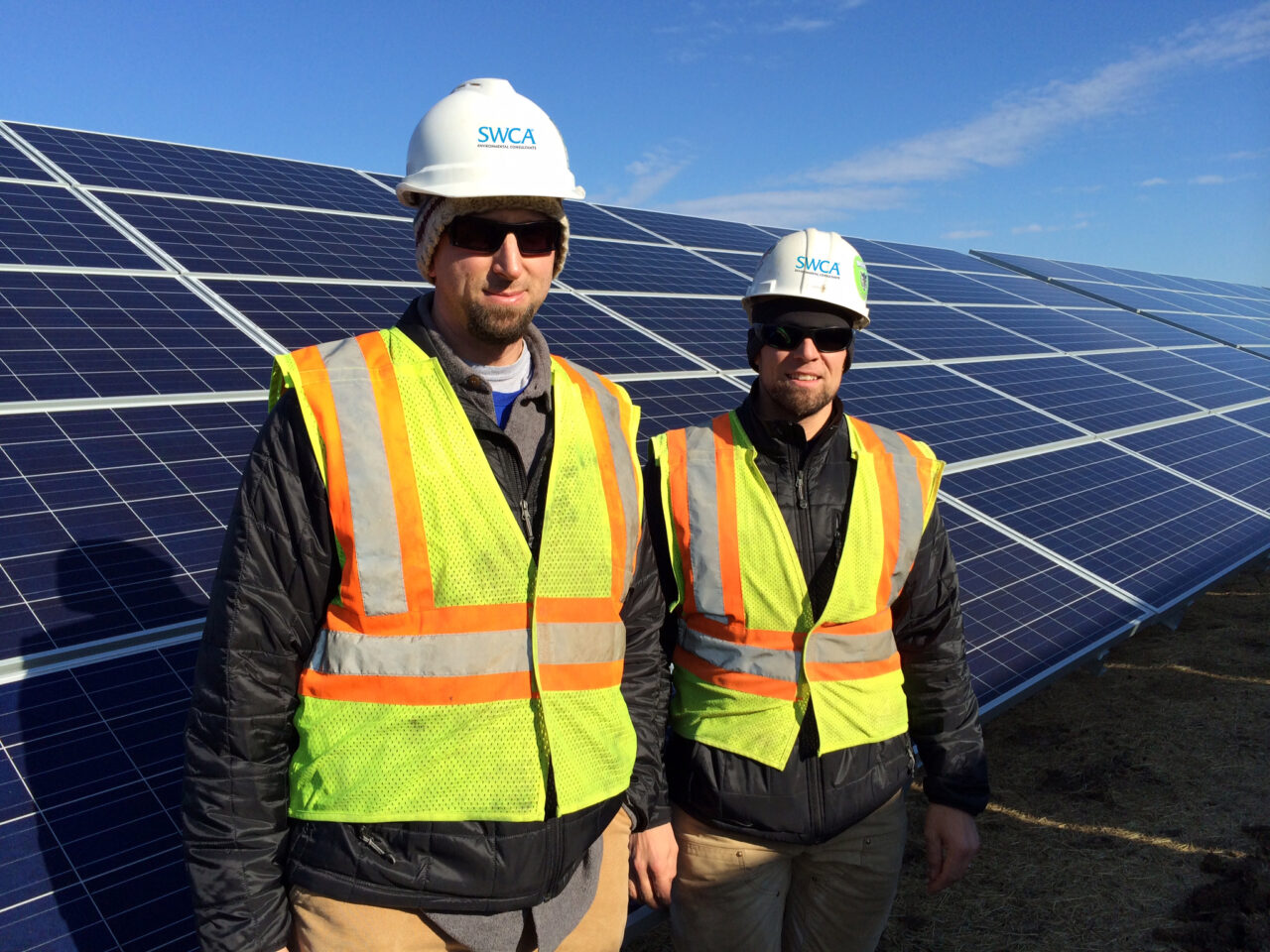2025
Comparably’s Best Company Outlook
* Providing engineering services in these locations through SWCA Environmental Consulting & Engineering, Inc., an affiliate of SWCA.

From the experts we hire, to the clients we partner with, our greatest opportunity for success lies in our ability to bring the best team together for every project.
That’s why:

At SWCA, sustainability means balancing humanity’s social, economic, and environmental needs to provide a healthy planet for future generations.

SWCA employs smart, talented, problem-solvers dedicated to our purpose of preserving natural and cultural resources for tomorrow while enabling projects that benefit people today.

At SWCA, you’re not just an employee. You’re an owner. Everyone you work with has a stake in your success, so your hard work pays off – for the clients, for the company, and for your retirement goals.
Five Tips for Permitting Solar Energy Projects on Bureau of Land Management Land
With relatively predictable land costs, desirable property locations, agency support, and a single landowner for large projects, permitting solar projects on BLM land has its perks.
Reid Persing has successfully permitted over 2,000 miles of extra-high-voltage transmission lines on behalf of clients in the United States. As Program Management Vice President, Reid supports teams working on behalf of NextEra to ensure they understand expectations related to integration into NextEra’s Environmental, Development, and E&C teams; supports proactive critical thinking outside the environmental scope of work; and helps teams connect with resources and insights to meet development cadence and other client requirements. His technical expertise includes leading teams pursuing major capital development projects through the development of permitting strategies, routing and siting studies, and strategy execution; preparation of federal and state right-of-way (ROW) applications; National Environmental Policy Act (NEPA) document preparation; regulatory coordination; and planning and execution of technical studies.


The nation’s largest landlord is open for business. Recent announcements of renewable energy goals by the Biden Administration have the Bureau of Land Management (BLM), which manages over 256 million acres of land, seeking to permit 25 gigawatts of renewable energy (enough capacity to power approximately 4.75 million homes) by 2025. The BLM has begun setting up Renewable Energy Coordination Offices across the West and is processing more solar energy project applications than ever before.
With relatively predictable land costs, desirable property locations, agency support, and a single landowner for large projects, permitting solar projects on BLM land has its perks.
Navigating the federal regulatory process and requirements for solar permitting on BLM land may seem daunting, but SWCA’s industry experts can help guide the way into business with the BLM. Learn more with these five tips for permitting solar projects on BLM land that can save you time and money.

Image credit: United States Bureau of Land Management, photo courtesy of Tom Brewster Photography (with modification), Attribution 2.0 Generic (CC BY 2.0)
Successfully siting a project on federal lands requires more comprehensive due diligence than similar projects on state-owned or private lands. Errors early in the process can result in avoidable delays (like the BLM denying your application or assigning it a low-priority status) due to conflicts with other applications or existing projects.
In addition to standard resource constraints (as reviewed in industry-standard critical issues analyses), comprehensive due diligence on federal lands includes the following:
The location of your proposed solar energy project determines the applicable regulations and land use plan that will guide the environmental review and regulatory processes required by the BLM. There are different requirements based on locations, such as Solar Energy Zones, Solar Variance and Exclusion Areas, and Standard Application Process Areas. This variation in the potential regulatory process duration is critical in your project development.
The BLM defines Solar Energy Zones, or SEZs, as areas that are well-suited for utility-scale solar development and where the BLM will prioritize solar energy and the associated transmission infrastructure development. SEZs are located in Arizona, California, Colorado, Nevada, New Mexico, and Utah. Environmental reviews for solar permitting in SEZs can be less complex than other locations and the BLM typically requires an environmental assessment (EA), a process that takes approximately 9 to 15 months.
The BLM designates most lands that fall outside SEZs in the above states as solar variance or solar exclusion areas. Applications located within solar exclusion areas are likely to be denied.
Applications located within solar variance areas are processed through the BLM’s variance application process. Applications must be approved by the BLM director prior to initiating a formal environmental review. The BLM typically completes the variance application process in 6 to 12 months.
After the BLM approves the variance application, environmental reviews for projects located in variance areas typically require an environmental impact statement (EIS). The BLM typically completes the EIS process in 12 to 24 months, resulting in a total application processing timeline of approximately 18 to 36 months.
BLM lands outside Arizona, California, Colorado, Nevada, New Mexico, and Utah do not have designated SEZs or variance areas. Environmental reviews for projects on standard application process areas frequently require an EIS, which the BLM typically completes in 12 to 24 months. BLM offices in some states (e.g. Idaho) are implementing pre-environmental review application screening processes, which are generally similar to the variance process and take approximately 6 to 12 months.
Typical development activities such as site testing or geotechnical investigations often require separate applications to the BLM and trigger environmental review and reporting requirements that are separate from the agency’s review of the solar facility itself.
When planning for these activities, make sure to account for necessary resource inventories, the time required for the BLM’s review and approval, and the limitations of the BLM’s approvals.
Start the geotechnical investigation and site testing plans early, consider the impact of seasonal survey requirements, allow for flexibility to account for resource constraints, and thoughtfully plan proposed activities to coordinate environmental review requirements.

BLM offices in many western states are experiencing a high volume of renewable inquiries and applications, while also experiencing moderate to severe staff shortages, often leading to delays or even stoppages in reviews and permitting. Hiring the right environmental consultant with NEPA expertise and agency know-how is critical to your success. Partner with your consultant to ensure application materials are complete and meet agency requirements and preferences. A strong consultant will help you coordinate any updates to site design and layout to coincide with major milestones in the permitting process; updates are typically easiest to integrate before the NEPA process begins and between draft and final NEPA documents.
Even well-sited projects can require some form of avoidance, minimization, or mitigation measures to be developed collaboratively between the developer and the BLM. During these negotiations, engaging construction and permit compliance professionals can help guide your project to success by avoiding commitments that sound helpful during the permitting process but are difficult or impossible to implement (e.g., oversized resource avoidance buffers, unrealistic reclamation expectations, or overly restrictive construction timing limitations). The BLM may not be aware of what is feasible and what is not when it comes to your construction methods, technology, or approach to the project. Engage with the right experts to develop the BLM’s understanding and support “out-of-the-box” thinking when addressing resource constraints to ensure the solutions are achievable on the ground.
Permitting solar energy projects on BLM land is a key step towards powering the nation with more renewable energy and can be a beneficial move for your business. Follow these tips to bolster your project’s success and if you are interested in learning more, SWCA’s experts are here to help.
For more information on siting and permitting renewable energy on federal lands, please contact Reid Persing.